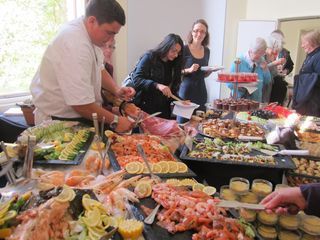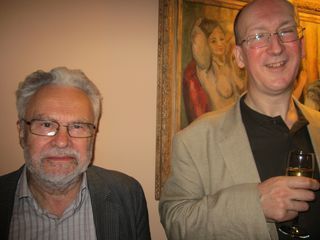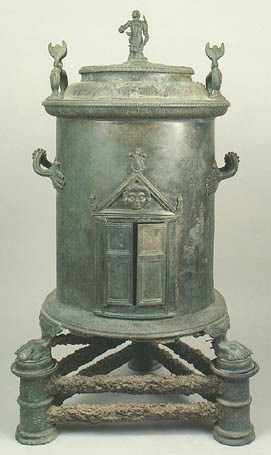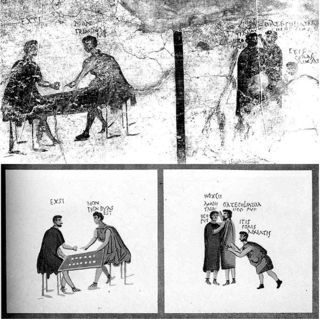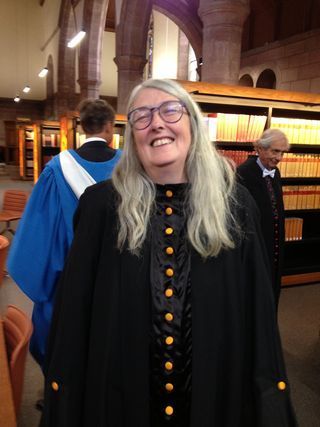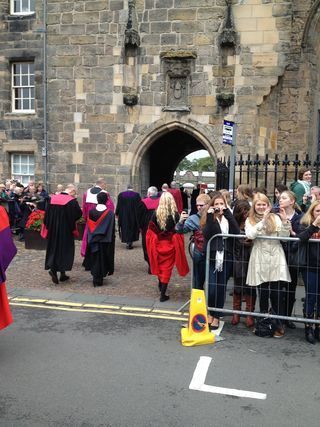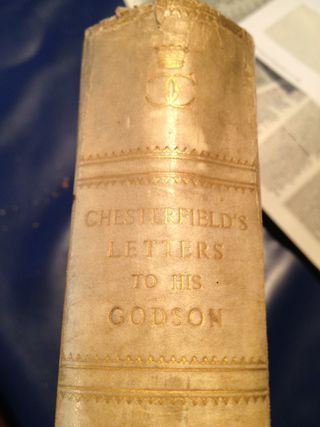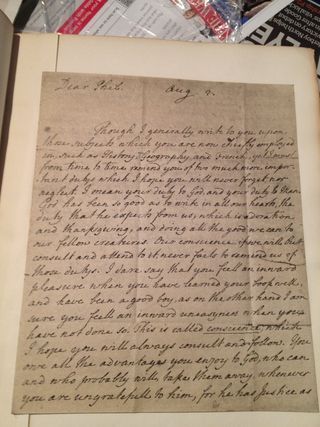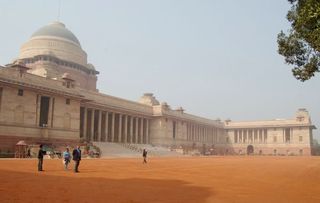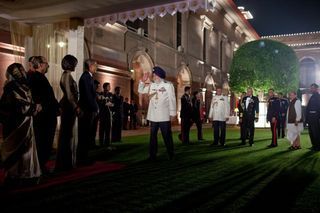Mary Beard's Blog, page 41
September 29, 2013
The JoyceFest: celebrating Joyce Reynolds
My old Director of Studies from undergraduate days -- and later colleague -- Joyce Reynolds is now 95, going pretty strong, and lives across the road. (I hesitate slightly on the 95: she is either 95 now, or on her next birthday in a month or so . . . I have been too polite to ask!)
When I say going pretty strong, I mean that she is a bit unsteady on her feet, resolutely refuses to wear her hearing aid (which would actually be a very good idea: Joyce, if you are reading this, DO give it another go), and is in our Faculty Library most days of the week. Currently she's editing a new book on the graffiti from the House of the Menander at Pompeii, and has all kinds of new inscriptions from Cyrenaica and Aphrodisias she's working to publish.
Her life's work has been Roman inscriptions from all over the Roman empire (which are still being discovered in large numbers). I guess the jewel in her crown must be the texts she published from the city of Aphrodisias (in what's now Turkey) -- including a series of letters, publicly inscribed in the city's theatre, between leading Romans and the Aphrodisian authorities. These give an extraordinary glimpse of the working relations between an eastern town and those in charge of the empire (including the major players in the Roman civil wars at the end of the Republic).
Anyway, thanks to a wonderfully generous donation, we were able to have a day on Saturday (we called it the "JoyceFest") celebrating her ongoing achievements. There were about 90 of is altogether: ex-students, professional colleagues, and friends of all sorts from the UK and overseas.
The main day's events were held in Newnham: two lectures in the morning (William Harris on Roman literacy, and Silvia Orlandi on some tantalisingly fragmentary texts from Augustan Rome); then a nice long lunch (that's the Petronian buffet at the top); then two more lectures in the afternoon (Paola Ceccarelli on Hellenistic inscribed letters and Peter Thonemann on marriage in ancient Anatolia), followed by prosecco and softies in the Museum of Classical Archaeology over the road.
In the evening we then had a small(ish) dinner in King's where Joyce got a presentation to mark her greatness (beautifully inscribed glass) and made a robust speech -- to the effect that the study of ancient inscriptions needs more funding and resources in Cambridge, as elsewhere. At 95 she turns out to be a rather adept fund-raiser! (Didn't manage any great photos, but you can see the honorand above!)
Personally I'm hoping that the Newnham classical genes will bring me similar longevity. My other old teacher, Pat Easterling, is still at the top of her game, and 80 next year. Cross fingers it's the same for me.
*******
Here's a few more pics, if you're interested ... with some of the characters of the day.
Prof North and Dr Tanner:
Dr Orlandi and Prof Treggiari behind:
And Professor Rouché:
September 25, 2013
Pompeii goes home.
I went to Pompeii for the last time today, the British Museum Exhibition I mean. I had a date there with my friend, the comedian Tony Law. The idea was to see if we could do, to camera, a trip round the exhibition that was light-hearted, funny... but also informative, and didn't just take the piss. And we had a camera in tow, to see what it might look like on screen (we were there after hours, not getting in everyone's way).
I honestly dont know what it looked like (this was only a test run, so you wont be seeing it on the telly). But it did give me a chance to think whether I had found some new favourite Pompeian objects during the time the show had been on. What had the exhibition made me think differently about?
Well some of my old favourites, I have to confess, remained favourites. The bar frescoes with the couple of guys quarreling over a game of dice (one calling the other "fellator"... which I still insist can only be properly translated "cock-sucker", whatever more sensitive souls might say. (Although this is black and white, it is a good reconstruction of the scene.. the "fellator" bit is above the head of the middle guy in the right-hand scene, and the landlord (bending over) is telling them to get outside.
And Pan and the Goat retains its (sort of) charm for me. Quite what we make of it still remains a puzzle.
But a new friend is the object at the top of this post. It's bronze food warmer -- partly extraordinary, as we agreed this evening, because it looks so fantastically Victorian. But in its functional way it's actually exquisite, and there is of course the question of how it actually worked.
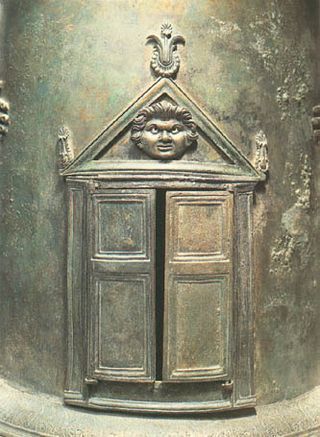
To my shame, I only actually started to think about that today. My guess was.. and it was only a guess.. that you would have lit a fire underneath and put the food you wanted kept hot in through those rather smart doors. But then does that top lid actually come off? (Does anyone know the answer to this?)
And presumably it was for keeping things hot in a posh dining room. This is far too splendid an object to have been hidden in a below stairs kitchen, the ancient equivalent of one of those warmers that you put little night-lights under on a modern dinner table?
Anyway, these thoughts were at the end of a long day in London, which included a meeting of the Samuel Johnson judges, and two meetings -- plus a gig at New Broadcasting House, making a little film for the BBC website to celebrate my favourite public art work of recent years, which is Mark Pimlott's "World" (just outside the new building). It features not only speakers in the pavement sounding out some of the BBC's foreign language output (nation speaking to nation) but also more than 700 place names from world geography and history, each one in mice metal, set into a different slab.
 I have always loved this (the pics don't honestly do it justice!), and it was great hopping round it to explain exactly why it is such fun -- in particular, the nice and shifting juxtapositions: Papua New Guinea, to Portsmouth and Plymouth, then to Pompeii (all the "P"s); but then up comes Santorini and Krakatoa (so we are in volcanic eruptions). And volcanic eruptions lead to other natural disasters (like Bam), and in turn (via Biafra and Darfur) to definitely unnatural ones (from Holocaust sites to Enniskillen and Lockerbie)... which somehow take us on to rivers, ending up with the Rubicon (both river and signal of civil war).
I have always loved this (the pics don't honestly do it justice!), and it was great hopping round it to explain exactly why it is such fun -- in particular, the nice and shifting juxtapositions: Papua New Guinea, to Portsmouth and Plymouth, then to Pompeii (all the "P"s); but then up comes Santorini and Krakatoa (so we are in volcanic eruptions). And volcanic eruptions lead to other natural disasters (like Bam), and in turn (via Biafra and Darfur) to definitely unnatural ones (from Holocaust sites to Enniskillen and Lockerbie)... which somehow take us on to rivers, ending up with the Rubicon (both river and signal of civil war).
Damn brilliant, but an exhausting day from dawn to now (10.00 pm)... marred by returning to Cambridge and forgetting where exactly I had left my bike. I found it, but it took 10 minutes.
September 22, 2013
Ancient Rome's best invention -- the joke?
I am still struggling with the footnotes of Chapters 6 and 7 of my Laughter book, and amazed at my own capacity for errors (even if trivial ones). An eagled-eyed colleague, who has just read my Cicero chapter, picked up for example that I had got one of my Shackleton Bailey references one out.
(For those of you happily unconcerned by the different ways of referencing Cicero's Letters, let me explain. For centuries the collections were referred to by "traditional" book divisions (eg "Letters to Atticus (Ad Att.) VII, 2, 1 or Letters to Friends (Ad Fam.) II, 3, 1). Then along came D. R. Shackleton Bailey ("Shack" to his "friends") in the second half of the twentieth century and re-edited them all, removed the "Books", arranged the letters in something closer to chronological order, and gave each one a new number. So now, if you want to be helpful to the reader, you have to put both kinds of reference: Ad Fam. II, 16, 17 = SB 155.
How the hell, after checking and double checking, I still hadn't spotted that that particular one was wrong (it should be SB 154) beats me.
Anyway after this I just have the final chapter = the conclusion to do. And after a bit of thought, I have a feeling that one of the things I am going to be concluding is that the Romans invented the "joke" as we know it.
I dont mean that noone said anything funny before. And what is more there are a few places in eg Aristophanes where you can detect something like the narratives "set-up", rhetoric and idiom of a classic "gag" (I had a good discussion with Stephen Halliwell about this in St Andrews last week) . I mean that it was Roman culture that first isolated "the joke" as a self standing "commodity" that could be collected and categorised and indeed bought and sold.
One nice support for this is found in the more or less stock-character of the "parasite" or "scrounger" in both Greek and Roman New Comedy. In Roman comedy, part of their kit is often a "joke book" which they ise to make people laugh in return for meals -- these are clearly meant to be collections of jokes ready-made, which which the parasite plies his trade (and on some occasions offers to the audience..."anyone give me a meal in return for a joke from my book?). The parasites in Greek Comedy (on which their Roman equivalents are based, show no sign of having these.
So we are dealing with a world in which Rome (or more accurately the Roman period of Greco-Roman culture) "commodified" laughter in a different way from classical Athens, or for the matter the Hellenistic Greek world (or so I think). I would add Plutarch to the pot here, at the end of the first/beginning of the second century CE. His Sayings of the Spartans etc presumably took quips previously embedded in narrative, extracted and anthologised them. Or think of Cicero's secretary Tiro producing 3 volumes of Cicero's wittiest sayings.
How far the Philogelos, the late antique compilation of jokes (late antique, at least, in the form we have it), matches up to the joke books of Roman comic parasites we can't of course know. But, as you can see from this selection, the jokes of the Philogelos (which means "Laughter Lover") certainly fall into the recognisable category of "the joke" as we understand it.
So the Romans invented the joke....? Can anyway telll me why I might be wrong on this?
September 18, 2013
One night stands in the USA
Since St Andrews, I have been in the USA. I went by the Scotrail sleeper from Leuchars to Euston, which is a wonderful way to travel. Nothing better than sipping a single malt in the lounge car as you gently chuff through what you know to be glorious countryside (even if you cant see it), before heading for bed. The last time I went this way, I had just one complaint -- namely unspeakably undrinkable instant coffee in the morning; this seemed to have been solved, up to a point, with a Starbucks franchise.
Anyway the point of the lectures in New York and Washington was to wet the head of my Confronting the Classics which has just come out in America (with a rather different cover). So partly a commercial motive here, I confess. But there's rather more to it than that.
Just like in the UK, when you give lectures like this, you find yourself talking to students, and colleagues ... and generally banging the drum for the whole subject. (As someone I met after the DC gig said, you'd never think more than 300 people would buy tickets for a Tuesday night lecture on the Greeks and Romans; and that means the organisers will think about hosting more classical events, and so on ... and it's hopefully incremental.)
And other thing is that it offers a chance to really get to know the people at the publishers, who are publicizing, selling, and generally representing your book. Of course, whether they meet you or not, they'll do their job for you -- but, put it another way, if you're expecting them to look after your book with all the loving care that you would hope, you might at least have the courtesy to cross the Atlantic to meet them. I've known some people at Norton for years, but it was great to meet lots more, with all kinds of different skills (from social media to stuffing books in jiffy bags).
It is all actually harder work than you might think. It would be easy enough to say..." oh just write a PR piece that hypes the book, and go and deliver it; you could do that on auto-pilot". But it isn't actually like that, or at least not for me. Each venue, each place you go to, has got significantly different interests, and the lecture takes place in a significantly different context. So you can't just spout the same thing. In DC for example, it was not only one day after the Navy Yardvshootings, but I also needed to reflect back to the lecture series I gave there a couple of years ago on images of Roman emperors ... and that meant rewriting and redoing the powerpoint etc. To be honest that fine tuning is several hours work. I'm not complaining, you understand. This is my job. But this isn't quite the falling off a log you might think it to be.
There were, of course, some happy surprises. I went to do a quick interview about "why the Classics matter" on the Leonard Lopate show on WNYC, which was fun. As I left, he was saying into his microphone, "In the next section of the show, I'll be talking to Margaret Atwood..". Down the line from Canada, I assumed.
But no, there she was in the waiting room. And you never guess what, she said she was really interested in Caligula (the man not the movie, I think).
Made my day (but blimey what a star-gazer I am)!
September 15, 2013
Celebrations in St Andrews
The event of the week for me was going to St Andrews to get an honorary degree in rather more glitzy company than, I suspect, I deserve to be mixing in. No false modesty here, let me assure you. The chief honorand was Hillary Clinton who gave the speech at the “awards ceremony”.
It was a rather special ceremony, in fact, as it was marking
the 600th anniversary of the university. So, in addition to some Clinton good sense on
world geo-politics, and safe cookers for the developing world (is it really the
case that unsafe cookers and cooking fires kill more people every year than
malaria?), there was plenty of tribute paid to the university itself and
Scottish educational traditions.
But she was just the tip of the intellectual iceberg.
Also getting degrees were Natalie Zemon Davis (one of my
favourite of all historians), Rowan Williams (one of my favourite archbishops),
Judith Butler, Diarmaid MacCulloch, Jane Goodall, Marilyn Strathern, Tims
Gowers and Berners-Lee, and a whole
gallery more. Closest thing to being at a dinner party with the combined Order of Merit that I can imagine
It was fun for me for all kinds of reasons. For a start, to my shame, I never been to St Andrews before and hadn't actually realised how beautiful it is (including the very beach where they raced in Chariots of Fire). Then I
got to meet my mates in the School of
Classics there (and Stephen Halliwell did a great, and deliciously, head-explandingly generous,
speech about me). There was also the pleasure of being part of a rather long
but brilliantly choreographed and nicely good humoured day of processions and
ceremonial. It included plenty of (slightly predictable) jokes about the
ex-archbishop having married two of St Andrew’s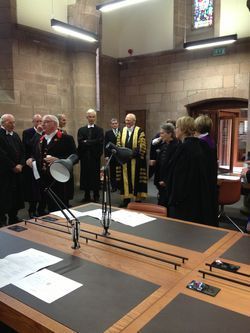 better known alums (Wills and
better known alums (Wills and
Kate); while Jane Goodall and her “laureator” gave a magnificent
impersonation
of a pair of chimps saying “hello” – followed by more jokes about “primates”,
human and animal. (I suspect this all sounds a bit feeble in cold type, but in the midst of
all the rather splendid flummery it was actually very funny.)
But in fact what I guess I shall remember most vividly is the
amazing costume of it all. The chancellor
(Menzies Campbell) was gorgeously
attired in a black gown with gold brocade (and matching mortar board -- stands out in the pic above), the vice-chancellor
had a similar silver one. And we honorary graduands were dressed up in the
most flattering cassocks (even if a touch Hogwarty) that I have ever come
across – each with buttons colour coded according to the degree were getting.
A good time was, in short, had by all. Sadly I couldn’t stay
for the lectures, events and fireworks on the Saturday – as I had to board the
sleeper south again, for more travels, about which you'll shortly hear.
But thanks to everyone at St Andrews who made it all such fun.
Here, just in case you dont quite believe me is Hillary Clinton, and underneath a smart young piper!
September 13, 2013
Why tweet?
Quite a lot of people ask why on earth I haven't given up twitter. Why expose yourself to all that cr*p? Why get so involved with some insubstantial, modish fetish? And -- this tends to be the husband's line -- why complain about how pressed you are and then give any time to Twitter at all? He's not just meaning the time it takes to compose 140 characters, but dealing with the mess when one of them goes viral: and true, after my pointed but relatively innocent little Twitter joke about the M&S ad was turned into "Mary Beard slams M&S for sexism", it did take many patient hours explaining (not always to good effect) that I had never "slammed" anything.
My answer is this. There is nothing inherently the matter with the medium itself; it's us the users, and the uses to which it is put (and, to some extent, the moderation and reporting mechanisms provided by te company concerned). A few years ago we were hailing Twitter as the catalyst of the "Arab Spring" (the 'Twitter revolution" we called it, remember?). Now we are slamming it as one of the forces of sexism and misogyny. It is and was, of course, neither.
The bottom line for me is whether we get more out of the medium than we lose. For some people I suspect the balance isnt clear. But for me, despite the real and sometimes alarming nastiness, I still feel that I have come out ahead. These are a few of my considerations.
1. It's true that I have had (both sent and received) some tweets that have become inconveniently noteworthy, mostly for bad reasons. But most of my twitter activity is nothing like that. I am in touch with lots of kids doing GSCE Latin (and they will approach me much more easily via Twitter than email). I answer loads of questions about the ancient world, about what to visit in Italy, what is a good book on such and such a subject, and so on. And I translate from and into Latin. It's one of the main ways I keep in touch with lots of people (some of them now friends) who are interested in Classics. (Blackburn College.. that's how we met wasnt it? And Devonport High? And lots more, too many to name.)
2. I come across all kinds of wonderful things in newspapers at home and abroad that I woud never usually read. People tweet excellent articles from the New York Times to the Times of India, which kick me out of my comfort zone. And, especially in the archaeological side of my subject, I get all kinds of leads about new discoveries (or museum developments) from all over the world -- things picked up on the grapevine at conferences, or small notices in Turkish newspapers. It's not the main way I keep abreast, but it is one of them.
And there's more...
3. There is a nice interlocutionary element to it, as people respond to what they are listening to on the radio or watching on the television. Sometimes this can be brilliantly funny (if you havent followed @TheVintageYear commentary on The Archers' Omnibus on a Sunday morning, I really recommend it). Sometimes it's offering useful factual or interpretative alternatives, alerting you to different views (which is what @ProfFrancesca has been doing alongside Simon Schama's History of the Jews.) I find myself drawn to it when I hear someone on the radio get some fact about the Ancient World completely garbled (like talking about Nero in the Colosseum -- sorry guys, the Colosseum wasnt built in the reign of Nero). Some of this is trivia, of course, maybe a lot of it (hard not to be trivia in 140 character). But it's often high fibre trivia, and there's a role for that.
4. On the other side, I can get some of the stuff that I publish in unlikely places -- or my blog for that matter, or public lectures -- out there more widely. Now I think there is a bit of a problem of different etiquettes here, and rather different views about what the conventions should be. Some of my very best mates (sorry, hope this isn't going to lose you!) have a tendency to tweet a link to every favourable review or mention of their own books or programmes, which can give their Twitter feed the appearance of a prolonged boast (unless, as a few of them do, they actually tweet the unfavourable ones too... or mention the drop in viewing figures). I'm afraid all that seems to me to get dangerously close to the "naff" (and if I have ever done it, it has been inadvertent). But I do publicize events that I am doing (why not have a full house if you can get it?) and I do often post a link to the blog. Some people are regular readers, but some people will want to read a post about Roman history, but not about Twitter (so tweeting lets them know!). I guess though that some people will think that this is a pretty self-publicising use of Twitter too (not to say veering towards the naff).
So I am happy to be there in the Twittersphere for all its disadvantages. And if people say to me, why dont I just get out of the sphere if I dont like some of the harrassment; why do I spend time pointing it out or complaining? Then my answer is likely to be that we dont tend to respond to playground bullies, by leaving the bullies in charge of the playground.
September 8, 2013
More footnote dilemmas and the rewards of laziness.
As you will know if you read my last post, this week has been dominated by footnotes -- first losing them, then redoing the damn things, then finding them again (so time spent re-doing them rather wasted). But that is not all. If you are interested in the kind of mind-dumbing minutiae that writing a book entails, then read on. You have been warned.
The problem of being at this stage of finishing the damn thing is all the decisions that can be put off no longer, and all the inconsistencies you find. One of the ones that the "loss/finding" debacle revealed was the total inconsistency all the way through in referencing Plutarch's Lives. OK, this isn't exactly a life threatening issue, but it has to be got RIGHT.
There's no difficulty with the main chapter divisions ("Plutarch, Cato Min. 21" and the like is fine). It's in the subsections ("Plutarch, Cato Min. 21. 2") that the mess lies.
I discovered that sometimes, in some chapters,I gave the reference according to the Teubner edition (that was when I was being a proper pukka academic -- for those of you that haven't come across them, Teubners are high class German editions with no translation, just unadulterated hard-core Greek or Latin). But sometimes I gave them to the Loeb edition (that was when I was being a bit lazier -- Loebs are rather less pukka but have a handy parallel translation). Now that wouldnt matter, of course, except that they divide the subsections differently ("Plutarch, Cato Min. 21, 2" in the Loeb is NOT "Plutarch, Cato Min. 21. 2" in the Teubner., and so on.)
Every single bloody Plutarch reference in the book (and there are 100s) would have to be checked again.
Inevitably I wasted an hour or so, trying to decide which system to use, going backwards and forwards between the two options. To give the Teubner reference would look a lot more "professional" . . . but face it, many more people who chose to look the reference up would go to the handy old Loeb, and be repeatedly irritated by what looked like a "wrong" reference. Errr....?
Then, of course, an idea struck (why it hadn't struck before God only knows). Did I actually NEED to put the subsections in at all. I mean Plutarch's "chapters" aren't all that long -- most of them about a page of Greek text (and they weren't, as you will have worked out, a creation of Plutarch himself, but the systematization imposed by modern editors). Why not just stick at "Plutarch, Cato Min, 21", and forget the subsection and mislead noone. True, sometimes I am trying to point to just one particular sentence; but better to give someone a page of reading, than an apparently misleading reference that will just make them cross.
And for me, the good new is that instead of checking them all again, I just go back and delete the subsections.
The next dilemma isn't quite as sorted, but almost I think. I have to use the name/date system for modern references in this book. So not "See M Beard, The Roman Triumph, Cambridge MA, 2007, 25-6", but "See Beard 2007, 25-6". Some people hate this, but for me it works well enough for really recent work (except when you discover that the prolific author has written 2 things in the same year, and you have to go back and start putting "1992a" and "1992b" in all the right places).
Where it really annoys me is with eighteenth and nineteenth century books. I can't bear seeing references to Pride and Prejudice which say "See Austen 1995, 78-89", referring to the latest Oxford Classic or whatever, when dear old Jane was long dead (and anyway it gives the impression that she wrote the book after most of the critical commentary on it). On the other hand to say "See Austen 1813, 54-67" is pretty useless, as who has the first edition to hand to look up the page references.
Now writing on Roman Laughter, I dont actually have the Jane Austen problem, but I do have the Thomas Hobbes problem. "Hobbes 1969" for The Elements of Natural Law (1640) just looks daft to me, but actually its the 1969 edition by Tonnies that people will have in their local library. I started off saying "Hobbes 1969, 105-6 (original edition published 1640)" which was clear but very cumbersome in a note where there is a lot of such things. So I think I have now decided to go back through and have that in the first ref only, then after that put "Hobbes 1969 [1640], 105-6". Sound a good plan?
If you are well and truly bored by this now, I am not surprised. But just remember it is how I am spending almost all my waking hours.
But occasionally I AM taking the comfortably off, middle-aged academic's way out of my difficulties. The other day, I realised that I had forgotten to go and check the 1890 edition of Lord Chesterfield's Letters to his Godson (I had done the Letters to his Son, but missed the later collection). It was in the Rare Books Room of the University Library -- 15 mins bike ride away, then I would have to order it up, equip myself with a pencil (no pens allowed in Rare Books), do the checking, come back.. probably a minimum of 75 mins round trip. Hang on I thought, may be I can just BUY it on the web.
Thinking that anything up £15 was probably a more economical deal that the UL trip, I soon found a copy for £11.99. Problem solved, but I wasnt actually expecting any particularly splendid book. 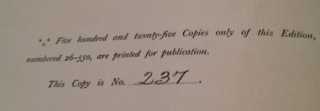
Just look what arrived. A lovely, handsomely bound (if very slightly battered) numbered edition (no 237 out of 525), including a facsimile of one of the letter, that was so good that at first I took it for an original.
Worth rather more than the £11.99, I should say. Laziness amply rewarded.
(Quite why I WANT Lord Chesterfield's Letters to his Godson is another matter -- except for that one reference to smiling and laughing... but you never know.)
September 3, 2013
The dog ate my homework ... and its modern versions
I have to confess that when students come to me and explain that their work (in an almost finished state) has been destroyed by a computer crash, I have two reactions: a) sympathy, b) disbelief. To be honest, I've alway had a sneaking suspicion that it isnt all that different from the old "dog ate homework" story. No doubt occasionally it is true, but quite how often...
A bit like all those old stories about people (eg T E Lawrence) losing the only manuscript of their books on some railway station (usually Bletchley or Reading). (Another comic variant would be Baldrick's dictionary.). Hang on I thnk.. you have a single manuscript of your book and you are taking it to Oxford and you actually forget it in the waiting room at Reading. How likely is that?
Anyway, this week it happened to me (and I have to rethink some of my earlier suspicions). It wasnt exactly a crash, more a stupid mistake. I had been checking the foot-notes of the fourth chapter of my Laughter book, and filling in the missing ones (you know, the vague notes that you put in as you are going through in some earlier version... "Does Le Goff have anything to say about this?" or "Surely somewhere in Plutarch's Caesar?". Etc.
Anyway it had taken a few days. I had started by Friday and saved the work to Dropbox when I went to bed on Friday night. I worked on the thing through the weekend up till Monday evening. On Saturday and Sunday I had simply saved the work on the desktop, but when I finished in the library at 6.00ish on Monday, I thought -- help-- better save another version. So I saved it again on the desktop, and then into Dropbox.. or so I thought.
To be honest I was knackered and I must have done something stupid. But when I had saved what I thought was the most recent version of the chapter into Dropbox, what happened was this: the late Friday version overlaid every version of the later Monday evening one. Irrevocably. That is to say, the work of three days had been wiped out. (No,I dont do Time-machine, if that is what you are about to ask.. I used to but it got irritating, so I stopped!).
I felt like crying, and indeed I did. (If I have been a bit long posting comments, that's why.. tired and emotional).
To be honest, it could have been worse, and I made up the three days in one long day. That's because it had been checking notes and inchoate notes. The answer to "Does Le Goff have have anything to say about this?" had been "no". That had taken a couple of hours to discover on Saturday, but today I knew what the answer was. I could also still remember who had said what about the end of Virgil's Fourth Eclogue, which had also taken me a good couple of hours to reconstruct on Sunday.
But there were also some lessons. For a start, never mind what happened with the Dropbox (some synching issue?), it would have been a good idea to save on a USB stick at the end of every day. That way one coud never have lost more than 24 hours of work.
And maybe the old notebook method would have helped. I had decided to cut out the middle man, and not to take notes into a book, and then transcribe onto the laptop. That was, I thought, not only a waste of time and dead old fashioned, but also an entry mechanism for errors. You copy the stuff into your book and then you can't quite read it, but copy it into your chapter anyway... So everything had been done DIRECTLY onto the laptop.
Fine, but when it disappeared, it just disappeared... if I had had a version in my notebook, I could just have used that...I wouldnt have had to start all over again!
But then I thought that it was less than a month ago when we were searching for the hard copy of what the son had corrected (chaps one and two) but left in the library (and we thought lost-- irrevocably). So maybe you cant win. Just do the belt and braces... dropbox, USB, print it out, write it in a note book.. and dont leave it in Reading railway station.
Oh help..is finishing a book always like this?
August 31, 2013
Edwin Lutyens and the President's Palace
The reason why were on that long haul flight (see
last post) is that the husband is working on one of the architects of new
Delhi, who had started life as a recorder of Byzantine monuments in Greece
(name W S George, one of Lutyens's side-kicks, designer of the Regal Cinema and a variety of other things
in the vicinity).
He had things to do, and I had things to write,
snuggled up in the hotel….but he had booked for us to go round what I still find myself calling inadvertently the Viceroy’s Palace
(but should, of course, be the President’s Palace), designed by Edwin
Lutyens over the 10’s, 20’s and 30’s of the twentieth century, now the
residence of the Indian Head of State, not any longer (phew) the Viceroy. This
has only been an easy option for a few months, and you can book online. (And the
best speedy background to it is a great radio broadcast by Matthew Parris,
Simon Jenkins and Jane Ridley; click here.
It was an unexpected – and truly rewarding –
experience in all kinds of ways.
For a start, the whole tour of the building is really aimed
(rightly) at Indians wanting to see how their President lives. We were put in a
small party with a family from the US embassy… not with the wonderfully
obedient party of 60 quiet, but subtly giggly Indian girls, with whom we
entered the building. All the same, our guide still gave us a lot of stuff about, where the
President actually lived, how the butlers worked at contemporary state banquets,
and which lights (blue?) meant “clear the table” etc.
For me there were some surprising things. I had
not, for example, imagined that I would like the gardens very much. We had signed up to see
them on the tour, as it seemed a bit feeble not to. But I confess that I had thought that
one Mughal repro-garden was much like another. These were stupendous, and the
final butterfly garden was great – circular and full of flowers and
butterflies. And if anything the gardens turned out to be more atmospheric than the house. (That's the Obamas arriving for their state banquet in the gardens above, but it doesn't quite do the place justice.)
I am a huge fan of Lutyens
(Memorial to Missing of Somme is just brilliant), but I wasn’t sure that
the whole architectural ensemble worked as impressively as I had hoped it would. The
colour combination (of the Indian stone
plus the European style “marble”) didn’t quite do it for me. And it all seemed rather "empty" inside. We had been to the reconstructed Castle of the Knights of St John on Rhodes a month or so ago, a great fascist recreation and also very "cold". The husband rightly observed that the atmosphere was very much the same (and of course it was in a way -- two great architectural assertions of state power).
But, as always in places like this, there were one or two surprises. There were a few museum type galleries (showing things like the kitchen equipment of the Raj, the crockery and colanders... in a kind of sub National Trust "downstairs" display) But in one of these galleries there were some arresting, sometimes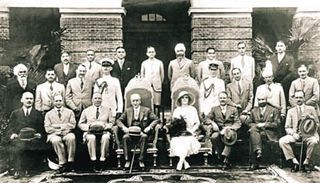 eery, photos of
eery, photos of
the British imperial regime. The one I remember best (I am writing
this 48 hours later) is a pic of Lord and Lady Willingdon (Viceroy and Vicereine in the 1930s), posing
in grand chairs, with four young Indian princes in traditional dress kneeling
in front of them, as if they were their own children. (That's them in a different group above.) It reminded me of all those much more
aggressive colonial monuments, in which colonialism is represented as
paternalism. This pic -- with its obviously "exotic" clothes (and not just on the princes!), and its gesture to the typical "family portrait photo" -- was a half-touching, half-decidedly-uncomfortable and (I would guess) almost unthinking example of that.
August 28, 2013
A trip in the air
It's easy to clock up the downsides of longhaul flight: the discomfort, the person sitting in the next seat, the jet lag, the potential DVT etc. I have to say, though, that there are pleasures too. Some of these are negative. The absence of email and the
mobile phone is top of my list (paradoxically, given my general affection for social
media). To be honest, I look forward with dread to the day when wi-fi is freely available
in the air. Because I know I will be weak-willed and use it, and spend the
whole flight on my email and posting a few (possibly ill-advised) tweets.
Now, by contrast, it's a chance to get on with stuff that can be done
without internet access -- like drafting the Preface to the next book, which is pretty much
done and dusted in the first few hours of this particular flight… not bad eh?
This is the start of it…is it OK?
“When I gave the
Sather Lectures in Berkeley in the Fall of 2008, I had the time of my life. I
hope that this book captures some of the fun we all had then in thinking about
what made the ancient Romans laugh – how, when and why Romans cracked up (or
said they did)…..”
I shall have to resist the temptation to sign off truthfully “Mary
Beard, August 2013, Somewhere above Iran” and more circumspectly put
“Cambridge”
But, to be honest, even more fun is listening to the audio on the
entertainment system.
For me, the particular pleasure is going to the “Essential
Albums” section of the audio and selecting the tracks to play -- over and over
again -- on my personal “playlist”.
The fact is that British Airways must know that a good few
passengers on its long haul flights are my age (or thereabouts), so the
“Essential Albums” do go back a bit.
It’s a trip down memory lane, as each one of the selected
favourites brings up all the recollection of when you (I mean, in this case, “I” of course) listened to
them first time around, never imagining that they would come back into my life
40 years later at 30,000 feet.
There’s hardly a single one of the selections on my
“playlist” that I regretted (though I did get rid of Brenda Lee's, “Sunny Side of
the Street” after the first play). But they do bring pleasures of very
different kinds.
Some of these tracks are actually very good, and
really don’t need to be re-launched by memories. Led Zeppelin’s “Stairway to
Heaven”, for example, still hits the spot as a really good track; like Pink
Floyd’s “See Emily Play”.
A few work especially well in the air. Not this time, but I
remember when I came back from visiting the daughter in Uganda a couple of
years back, and went over the Sahara (which I hadn’t seen properly before…. as
I wasn't by a window on the way out) to the wall-to-wall accompaniment of Leonard
Cohen’s "Halleluyah". I don’t actually have a clue what the song is about (though am sure someone will be able to throw light), but it
was the perfect celebration of the vast desert, which we seemed to fly over for
hours.
But some can only be listened to as some kind of proxy for
one’s life ‘back then”. Take the Troggs’ “Wild Thing” for example, number 27 of
my current playlist. In the cold light of day it’s a crude, unmusical number,
with three chords and not much nuance (“Wild thing, you make my heart sing”…right?).
But it takes one back to all those days when you waited for the DJ to put it on,
so you could have a good snog.
Much the same goes for number 21 on my playlist, Roberta
Flack’s “The first time ever I saw your face..” A sweet melody + lyrics of no
particular quality, but it accompanied so many romantic encounters that it is
always going to be part of MY personal playlist.
The favourite though, as it’s where the past meets the
present, is the Paul Simon stuff. I had always quite liked Simon, back to the
“…and Garfunkel” days. But I actually saw him live a couple of years ago.
I went to Cambridge Mass to be inducted into the American
Academy of Arts and Sciences (something that touched me hugely, both for the
honour and for the forgiveness –to me – of at least one section of the American
nation). It turned out that Paul Simon was also being inducted on the same day.
And after we had all done the hand-shaking bit, PS got out his acoustic guitar
and played to us motley crew of late middle-aged academics.
What it said to me was that not only did one’s youthful
music last, but so did one’s youthful musicians… there was something that just
felt right about being inducted with Paul Simon, and about the thought that we
in a funny way (though we had never met.. and he presumably didn’t know me from
Adam, nor ever would) did belong together.
I now always play him on a flight… today it was "Graceland" and “Diamond on the soles of your shoes”.
(Written in the air, posted on the ground.. no damn internet up here!)
Mary Beard's Blog
- Mary Beard's profile
- 4110 followers


